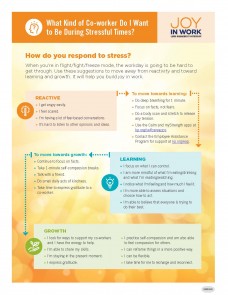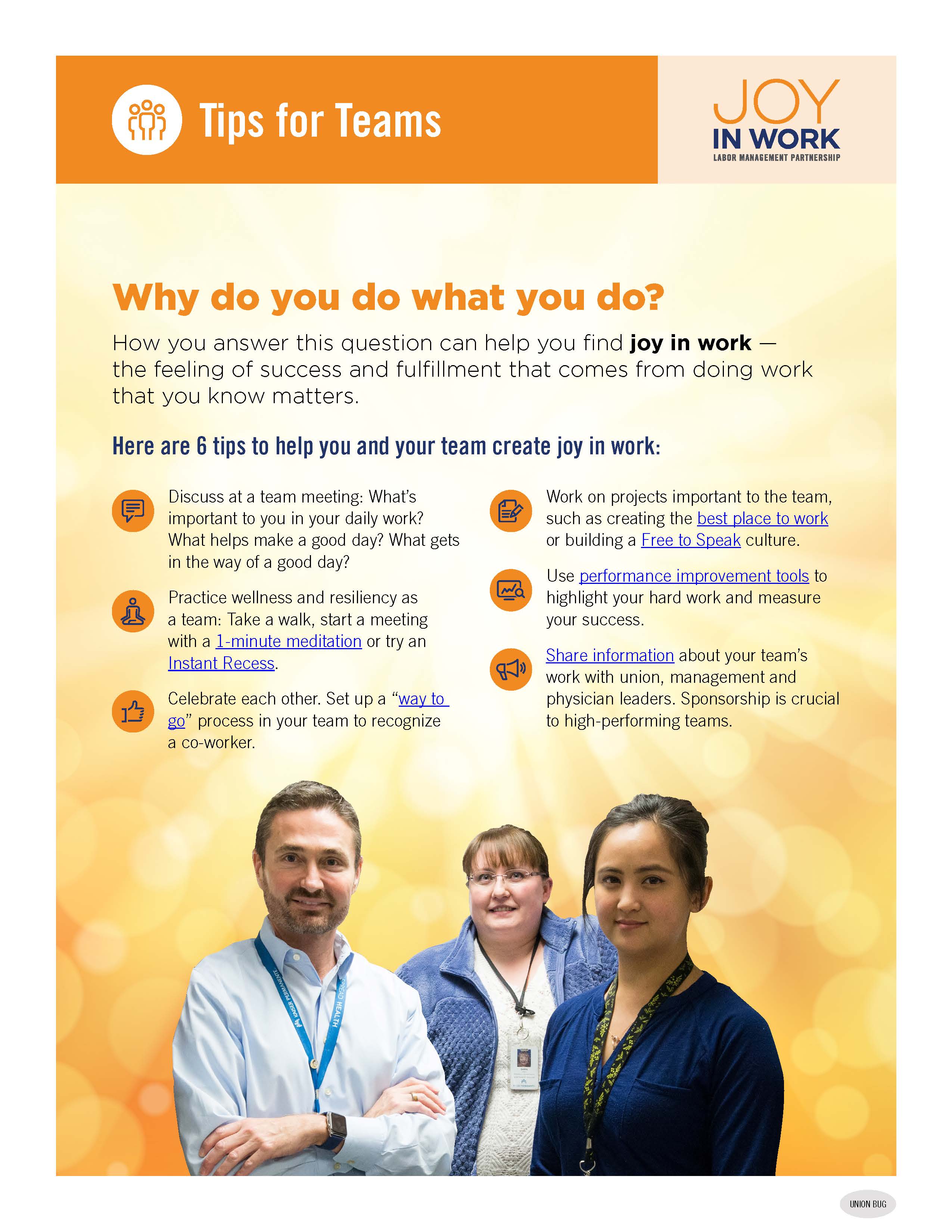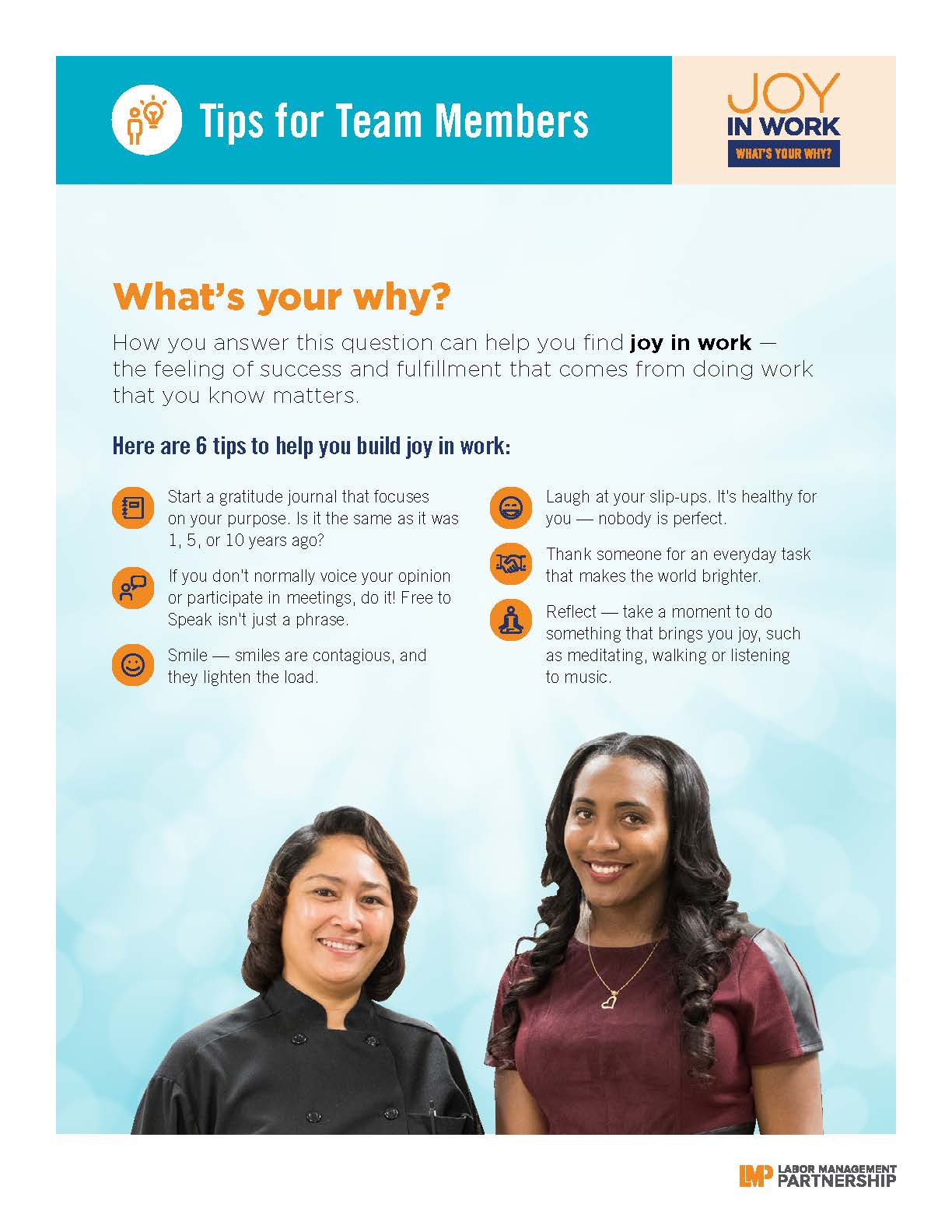Strength in Partnership
Deck: Labor and management collaborate to address pandemic
In 1997, the Labor Management Partnership turned strife between Kaiser Permanente and its unions into strength.
That strength is coming to the forefront again today. Decades of working in partnership are helping the organization respond to the COVID-19 pandemic, move forward together and provide a model for the health care industry.
With interest-based problem solving, a Free to Speak culture and performance improvement through unit-based teams, the Partnership has built a foundation that’s given leaders, managers and union members tools and relationships to collaboratively address this crisis.
Acting fast
Some of the response took place at the highest levels. Over a weekend, Kaiser Permanente and union leaders reached an agreement to temporarily enhance benefits for physicians and frontline employees.
“I’ve never negotiated anything as fast,” says Dennis Dabney, senior vice president of National Labor Relations and the Office of Labor Management Partnership.
Throughout the crisis, union leaders joined twice-weekly calls with top Kaiser Permanente leaders and played a central role with command centers and surge planning.
The key to making faster decisions was directly involving labor in operations meetings, says Hal Ruddick, executive director for the Alliance of Health Care Unions.
Having a voice
Partnership laid the groundwork for a nimble response in other ways, too. When COVID-19 hit, most vision appointments were canceled.
In Northern California, IFPTE/ESC Local 20 negotiated with management to have optometrists work in different roles. More than 120 optometrists volunteered to staff the COVID-19 test results call-in line.
“We showed our willingness to do alternative work — work that would be meaningful and keep our union members safe,” says optometrist John Corpus, a member of the local union’s optometry unit board.
Having a voice on the job equipped members to negotiate that deal, which included training, laptops and greater flexibility to work remotely.
“If our teams remain safe, are listened to and feel respected in the changes, they can live with the changes during this time,” Corpus says.
Improving workflows
At Beaverton Medical Office in Oregon, after COVID-19 testing began, managers saw that patients often needed multiple services. A new workflow was required — and the Nurse Treatment Room team’s registered nurses and medical assistants rose to the challenge.
“Everyone began sharing ideas and brainstorming possible solutions,” says nurse manager Cyndy Gillis. “The team formulated a plan that respected scope of practice, safety for the staff and patients, and a streamlined workflow that continues to adjust to new challenges.”
“It was the epitome of collaboration,” says team member Kellie Butchino, a certified medical assistant and SEIU Local 49 member.
Fighting together
One of the most vexing problems during the pandemic has been getting caregivers the personal protective equipment they need to safely care for patients. Working in partnership has helped.
“It’s not perfect,” says UNAC/UHCP member Andrew Calderon, a physician assistant at South Bay Medical Center in Southern California.
“But labor and management were there updating staff regularly and fighting to get us the materials we needed.
“We are able to provide the best care for our members because of partnership.”
Looking forward
Such collaboration across the enterprise will help Kaiser Permanente navigate the future — and inspire others, too.
In May, LMP leaders shared their pandemic experiences during a Labor and Employment Relations Association webinar, drawing praise from members of a 4-year-old labor- management partnership in Massachusetts.
“We are trying to proceed on the premise that there is no business case for adversarial labor relations,” says Bart Metzger, chief human resources officer for UMass Memorial Health Care. Partnership is “the only way we can push organizations such as ours forward.”
Partnership is an effective strategy for labor and management, Ruddick says.
“It’s harder, but it’s worth it because the results that you get are better.”




